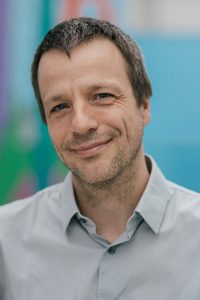SMA Registries Offer ‘Real-world Experience’ That Makes Best Treatment Possible

[Editor’s Note: This is part of a series of articles about the discovery and development of Evrysdi — the newly approved disease-modifying therapy for spinal muscular atrophy and the first oral, at-home one — as well as the scope of SMA issues and treatments. Here, we focus on patient registries and their crucial role in understanding a disease and its treatments.]
With three disease-modifying therapies for spinal muscular atrophy (SMA) to choose among, clinicians, patients, and caregivers are going to need the real-world data that best comes from registry studies, according to researchers with expertise in SMA.
Therapy approval is “just the beginning — or, let’s say, the end of chapter one,” Richard Finkel, MD, a pediatric neurologist at St. Jude Children’s Research Hospital in Tennessee, said in an interview with SMA News Today.
“Chapter two is really what we call the real-world experience,” he said.
With choice comes a need for solid, real-world data “to make proper decisions in the coming years,” agreed Laurent Servais, MD, PhD, a professor of pediatric neuromuscular diseases at the MDUK Oxford Neuromuscular Centre.
SMA, a rare neuromuscular disease, went from no targeted treatments to three — Biogen’s Spinraza, Novartis’ gene therapy Zolgensma, and Roche‘s recently approved Evrysdi — in less than four years.
While each approval was based on extensive, reliable clinical trial data showing safety and effectiveness, such trials covered only a part of the overall SMA population.
Clinical trials “don’t try to look at the full spectrum of a condition,” Finkel said. “They pick a segment, and study it very, very carefully.”
Evrysdi’s clinical program was the first to involve a broad range of patients — in terms of age and disease severity — and, in doing so, came closer than the others to real-world SMA. But there’s still a gap.
“It’s hard to extrapolate [results] to the full population, and that’s where we are now,” Finkel said.
Registry studies are crucial because they are the best guarantee that real-world data are collected prospectively and properly, Servais said.
Otherwise, “it’s very likely that not only we won’t have the answer to the efficacy of [a] treatment in all patients, but also we could have a biased opinion” that can lead to wrong — even risky — treatment decisions, he said.
Finkel also worries about bias, and urges that registries in the planning stages avoid such a risk by setting no restrictions as to “age, or ethnicity, or where you live; no bias in any way,” he said.
Questions they need to answer are important, like: how well do these therapies work in patients excluded from trials, which treatment is best for specific patient groups, what therapy combinations might best help an individual, why do some people respond better to a given treatment than others?
Until such key questions are answered, telling patients and caregivers which therapy is best remains a “challenging topic,” the St. Jude’s neurologist noted.
“I find there isn’t a black and white, or very clear, answer yet,” Finkel said. “It really has to be individualized, and there needs to be a fairly healthy discussion with the parents.”
Servais expects the hardest treatment decisions to involve people treated after SMA symptoms are evident, especially those with irreversible damage who may never recover lost motor skills.
Patients and parents in such situations are going to ask about changing or combining treatments, and doctors need a deeper understanding of SMA’s three therapies to answer.
“Having to decide what is the most efficient among the three drugs we have to choose among was just impossible to dream” only years ago, Servais said. “Now, we have to be clever enough to get the best out of this situation.”
Current registry studies
Several registries — observational studies to collect uniform information — are now enrolling patients, with others in the planning stages.
Biogen, AveXis (a Novartis subsidiary), and Roche are all supporting “efforts to gather these real-world data through different registries and activities, to make sure we better understand both the safety of these [therapies] as well as the different types of responses that we might expect in different types of patients,” Finkel said.
“Ultimately, that’s what everybody wants to know,” he added.
One of the largest SMA registries is the Biogen-sponsored International SMA Consortium (iSMAC) registry, which is currently following about 1,100 patients across the U.S., the U.K., and Italy.
Designed largely by clinicians at children’s hospitals, this disease registry is open to “any patient who wants to join and has genetically confirmed SMA, whether they’re on treatment or not, and any type of treatment or combination treatment,” said Finkel, who is part of iSMAC.
The consortium, which Finkel is hoping will run for at least 15 years, shares data from Spinraza-treated patients with Biogen.
Similarly, AveXis has started its own U.S.-based, 15-year registry called RESTORE (NCT04174157). While all SMA patients can join the registry at any of its current 26 clinical sites, AveXis is focused on those treated with Zolgensma, whether as part of or outside of a clinical trial.
“In gene therapy, we have data in patients from research up to the age of 7 months, and nowadays we are ready to inject patients much older,” Servais said.
Zolgensma, which uses a modified virus to deliver a functional version of the SMA mutated gene to cells, was approved for children up to age 2 in the U.S. and Japan, and for those weighing up to 21 kilograms (about 46 pounds) in Europe, which could cover children up to age 5.
“If we do not collect data, we will maybe inject tons of virus without having the singlest clue if it works or not,” Servais added.
U.S. patient advocacy groups, including Cure SMA and the Muscular Dystrophy Association (MDA), also have their own SMA registries. The first U.S. registry specific to SMA was launched by Cure SMA through its Care Center Network in 2018.
The MDA, in collaboration with the medical data services company IQVIA, started a registry study called MOVR (NeuroMuscular ObserVational Research) Data Hub. It collects comprehensive clinical and genetic data from people with seven neuromuscular conditions, including SMA, seen at the more than 150 MDA Care Centers across the country.
Outside the U.S., Treat NMD, a European network of more than 350 researchers and clinicians working with neuromuscular diseases, launched the Global SMA Registry. A series of national SMA registries, involving more than 3,000 patients, feed into the global study, which then combines their data.
Finkel emphasized that registry studies ask permission “for information to be collected on your child, or yourself, from your visit with the doctor in the office, and to enter that information into a database to be shared anonymously.”
“It’s really only with that type of information that we’re going to learn more,” he said, “and be able to answer some of these questions going forward.”









